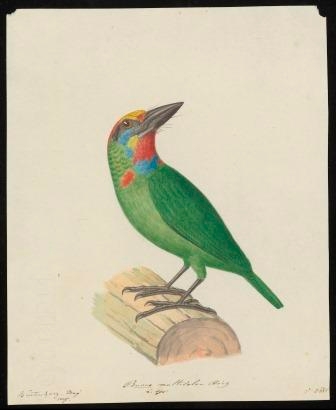
Leiden University partner in research on handwriting and image recognition
The Leiden Centre of Data Science and the Leiden Institute of Advanced Computer Science are part of a consortium that will carry out research on making illustrated and handwritten archives digitally accessible. The project is funded by NWO.
Complex and difficult to decipher
Many handwritten and illustrated archives contain a wealth of information, but are largely underexplored because they are complex and difficult for computers to decipher. The aim of the Making Sense of Illustrated Handwritten Archives project is to develop a digital environment that resolves this challenge and connects heterogeneous archival content to other digital sources. The project will be centred around one of the top collections of Naturalis Biodiversity Center: the archive and collection of the Natuurkundige Commissie, which contains a rich verbal and pictorial account of nature, cultures and economics in the Indonesian archipelago (1820-1850).
 Making use of diverse systems
Making use of diverse systems
The researchers will use an advanced system for handwriting and image recognition (Monk), complemented with contextual information on species, locations and habitats. Naturalis’ taxonomic expertise, in combination with history of science methods, will be used to refine the system further. The outcome of the project will allow Brill to offer the system as an online service for the heritage sector, as a strengthening of its digital humanities profile. This will serve both curators of illustrated handwritten archives and researchers who wish to further the understanding of these collections.
Bringing different expertises together
The 4-year project includes the appointment of two computer science PhD students (Leiden, Groningen), a post-doctoral researcher in the history of science (Twente) and a specialist on 19th century taxonomy and natural history (Naturalis). ‘The unique archive of the Natuurkundige Commissie serves as a perfect challenge to combine expertise from different universities and disciplines,’ says Brill’s Senior Acquisitions Editor Michiel Thijssen. ‘The resulting technologies will advance the ways in which scholars can study the archived human cultural heritage.’
Joint project application
The application for the project was submitted jointly by:
Leiden Centre of Data Science (Leiden University)
Leiden Institute of Advanced Computer Studies (Leiden University)
Naturalis Biodiversity Center
Artificial Intelligence and Cognitive Engineering (Groningen University)
Science, Technology, and Policy Studies (Twente University)
Brill Publishers (as partner from the creative industry)
The lead applicant is Professor Jaap van den Herik, Professor of Law and Information Technology at Leiden University. NWO has awarded the project 626,000 euros from the Creative Industry programme. Brill has also invested 268,000 euros (part in cash and part in natura).
Images: Naturalis Biodiversity Center, Archief van de Natuurkundige Commissie voor Nederlands-Indië.
